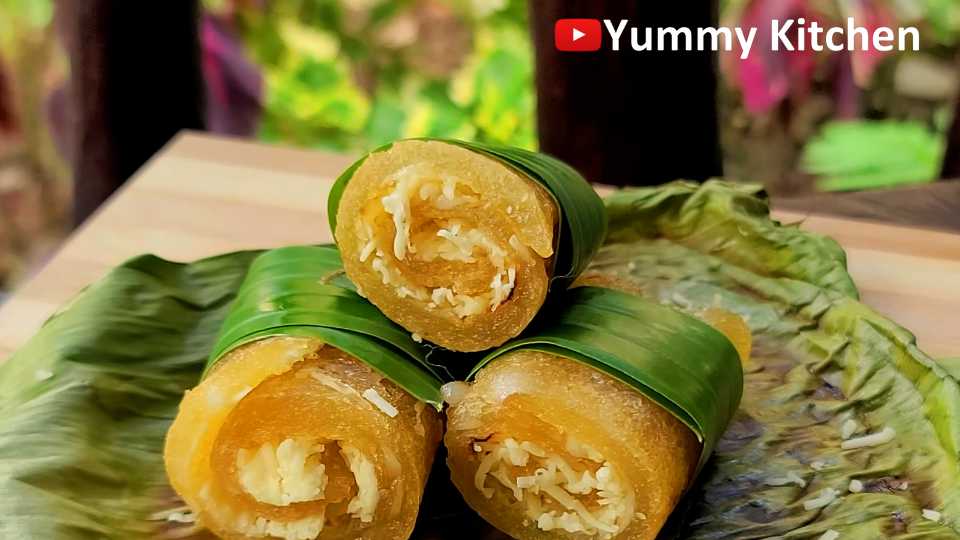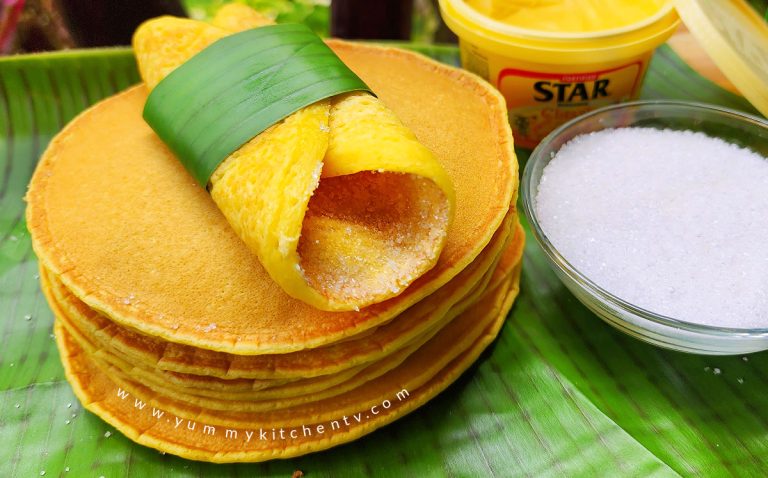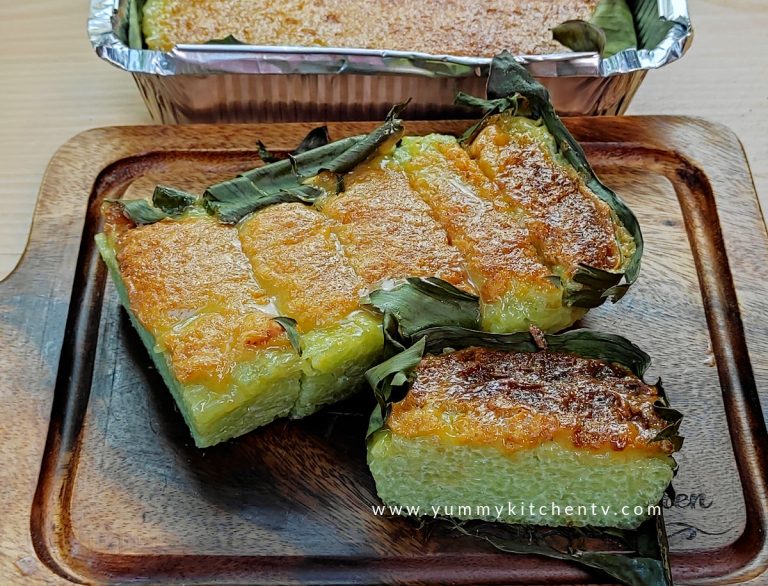Sinalab – A traditional Chewy Filipino Cassava Pancake
Sinalab, also known as cassava pancake is a traditional Filipino dessert, is made by creating a batter of grated cassava, coconut milk, sugar, eggs, and butter. The mixture is then laid on a banana leaves which give its distinctive taste and aroma. Cooked over the pan until it looks translucent. This dish is slso called as Sinaludsod or tinapik in other regions, Sinalab is a beloved Filipino delicacy that captivates taste buds with its unique flavors and satisfying texture. At the heart of sinalab is cassava, a starchy root vegetable that is abundant in tropical regions. Served as a snack or dessert, sinalab often takes center stage during festive occasions, family gatherings, or simply as a delightful treat to satisfy one’s sweet tooth.
Sinalab Recipe

Ingredients:
- 1/2 kilo cassava (kamoteng kahoy)
- 1/4 cup melted margarine
- 1 cup brown sugar
- 1/2 cup shredded buko
- grated cheese (optional)
- banana leaves (for wrapping)
Directions:
1. Peel the kamoteng kahoy and then slice to large chunks. Grate them to small pieces. Once done, squeeze them using your hands to remove excess juice. Transfer the squeezed grated cassava to a large bowl.
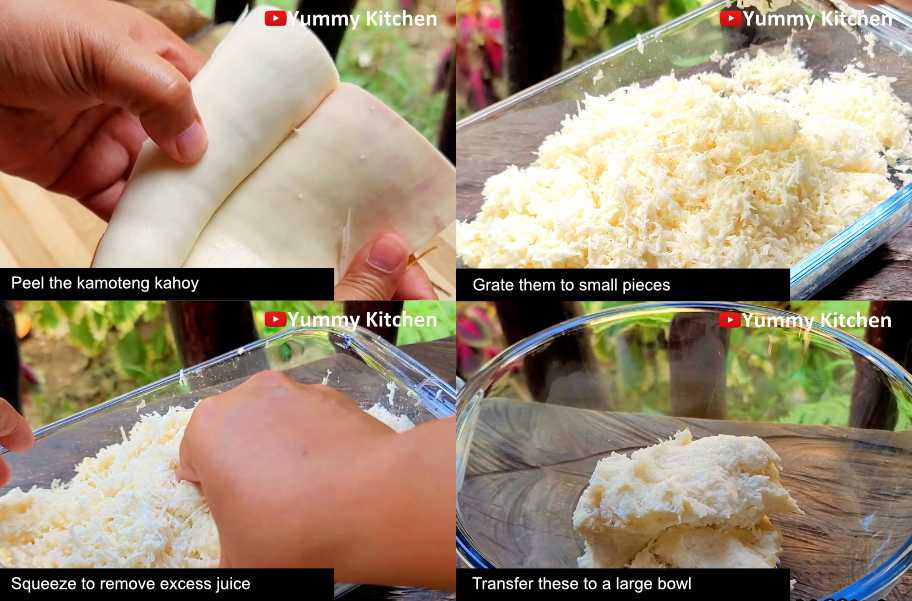
2. Add the melted margarine, brown sugar and shredded buko. Mix until well combined and the mixture becomes sticky.
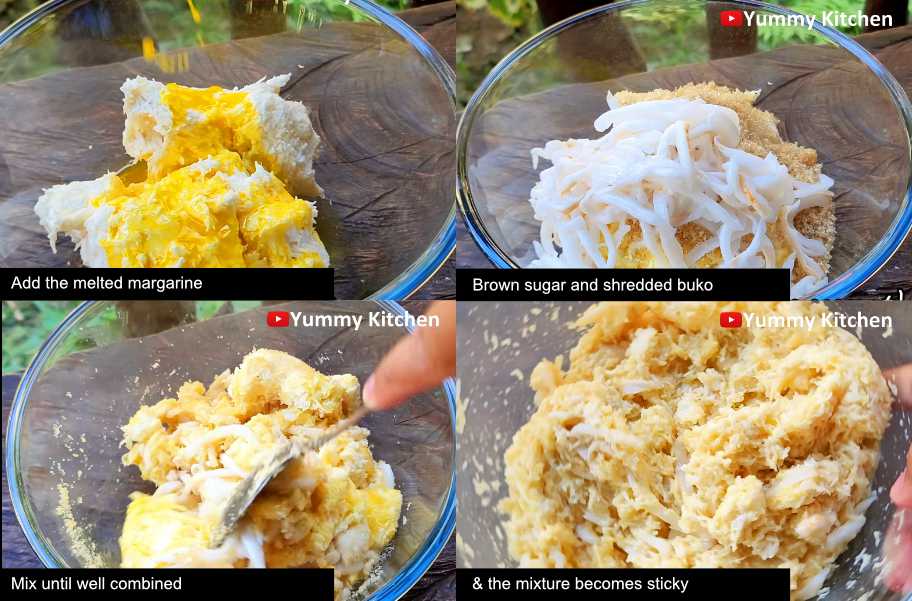
3. Lay a piece of banana leaf on a clean, flat surface. Add a few scoops of the mixture. Spread and flatten them before covering with another banana leaf. Do this with the rest of the mixture.
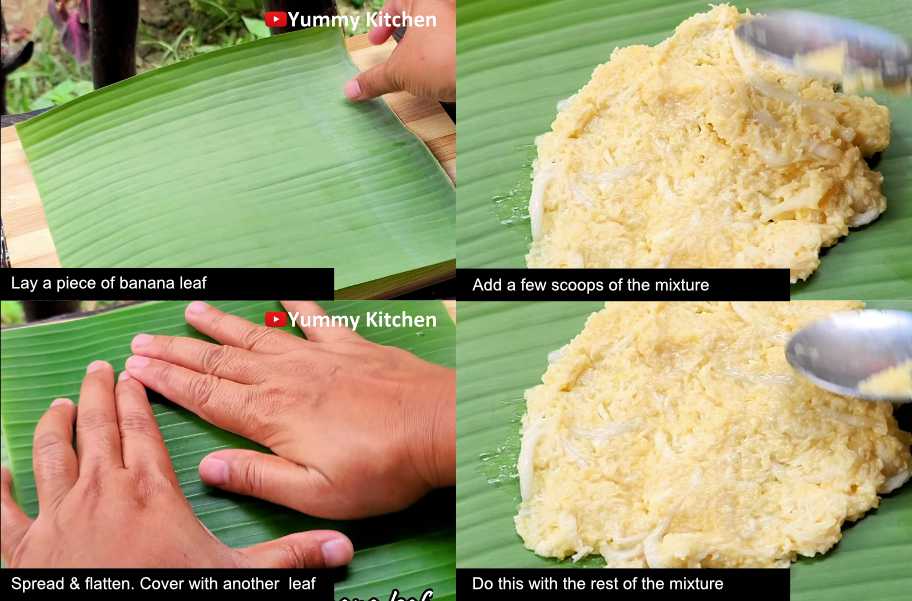
4. Heat a pan. Add the mixture while still being covered in banana leaves. Cover the pan and let this cook for a few minutes. Once the banana leaf at the bottom becomes brown, flip the leaves to cook the other side. Repeat these steps to the other mixture prepared.
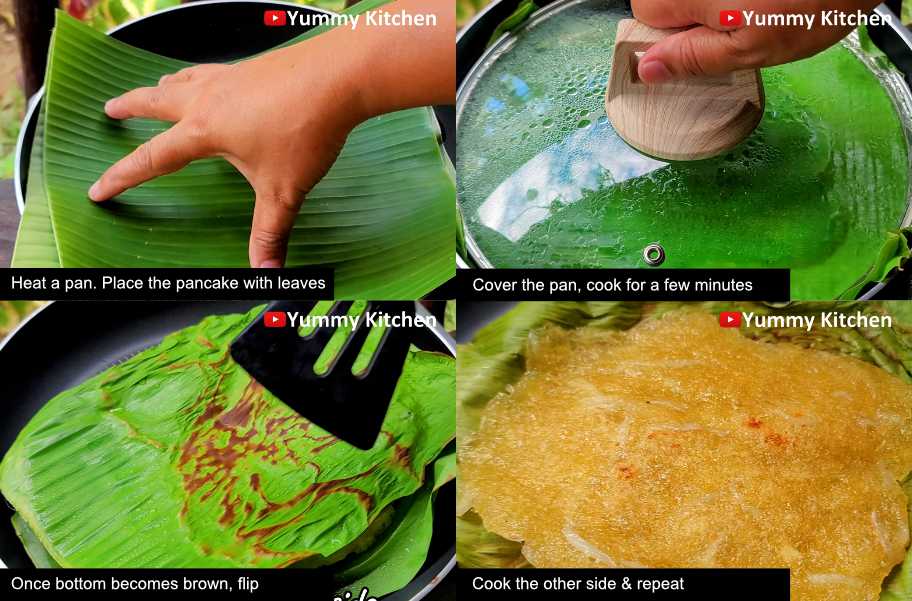
5. Top the sinalab with grated cheese. Roll the sinalab and slice into half before serving. Enjoy this with your afternoon coffee or tea. Yum!
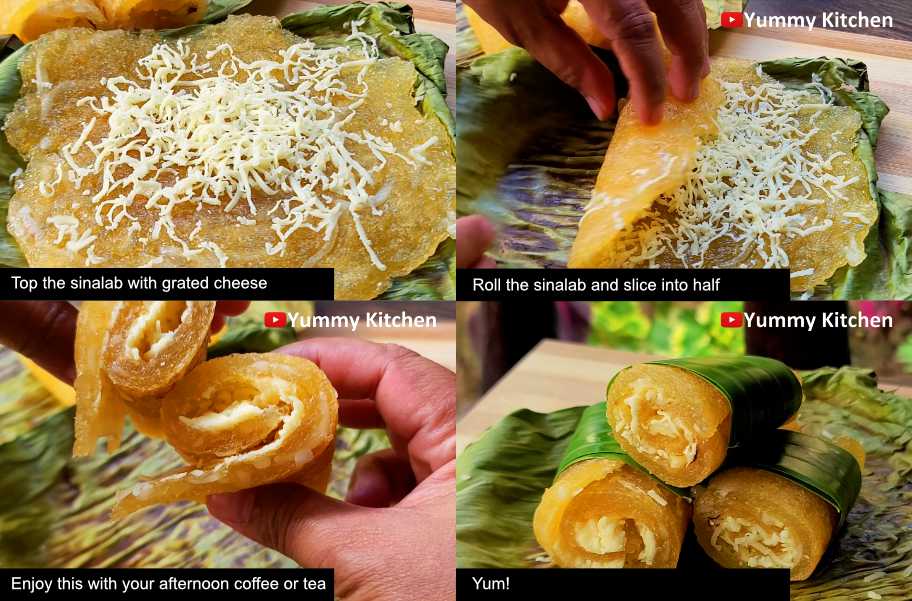
What is Kamoteng Kahoy?
“Kamoteng kahoy” is the Filipino term for cassava, a starchy root vegetable commonly used in Filipino cuisine. Cassava is also known as manioc or yuca in other parts of the world. It is a versatile ingredient that can be cooked in various ways and used in both sweet and savory dishes.
In the Philippines, kamoteng kahoy is used to make a variety of dishes such as cassava cake, cassava suman (sticky rice cake), and cassava bibingka (rice cake). It can be boiled, steamed, or grated and used as a base for desserts or as a substitute for rice or flour in certain recipes. There are many ways on how we can enjoy the cassava like sinalab, cassava chips, tapioca pudding, cassava bread, suman, bibingka, cassava cake and many more.
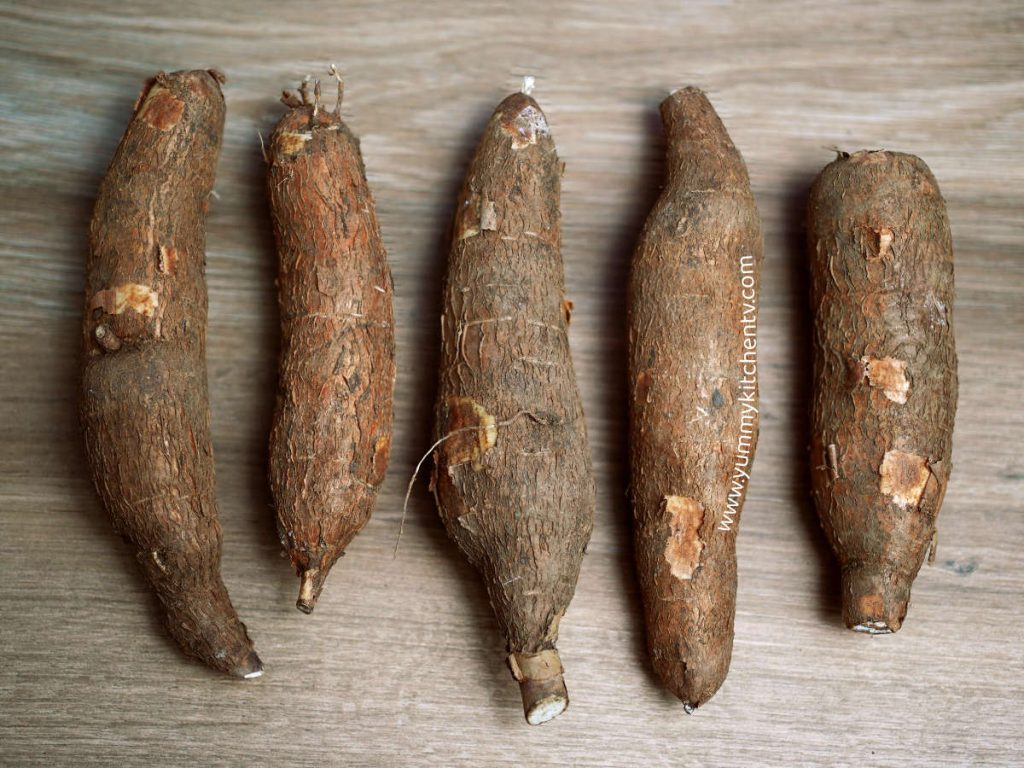
Why try this dish ?
Most of my friends from Manila don’t know about sinalab. But here in our province, your afternoon snack is incomplete without sinalab.
Kamoteng kahoy is very hard to cultivate in my own garden. It can take 3 to 4 months before a kamoteng kahoy becomes mature enough to be used in dishes. I am always helping my lolo pull out our kamoteng kahoy outside. My lolo was the really one to start our garden so I dedicate almost all of my recipes to him.
Harvested kamoteng kahoy are really big, and you can make a lot of dishes from it. Some of our favorites are the plain nilaga, minatamis na kamote, and of course the sinalab. But among our faves, sinalab was the hardest to prepare as it includes a lot of grating. Take note that the kamoteng kahoy is not soft like a cheese when grated! It will really take up your strength. When making sinalab, our family do the grating with taskings and has become one of our family bondings. My mom even consider this as her workout!
Having a sweet and lovely snack after heavy work is truly fun and satisfying. If you wanna know how to make sinalab at home, read and follow the simple steps below. Happy cooking!
How to Cook Sinalab ?
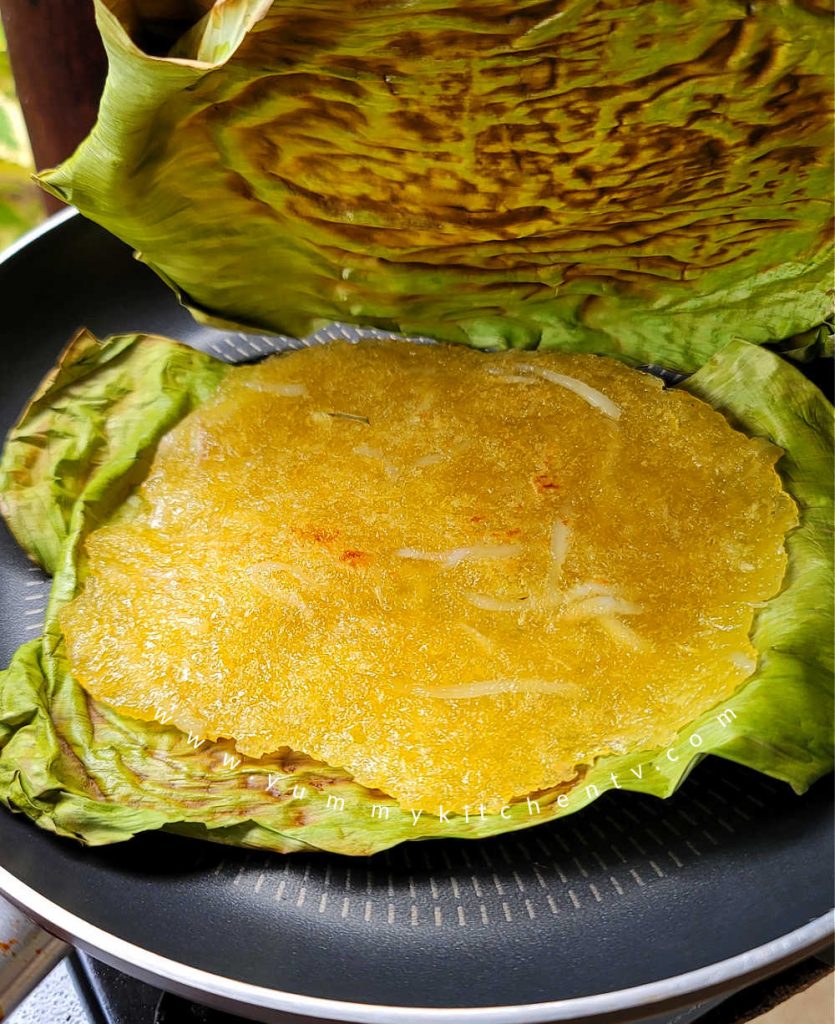
Peeling kamoteng kahoy (cassava) can be a bit challenging due to its tough outer skin. Start by selecting a fresh kamoteng kahoy. Look for cassava roots that are firm and free from any signs of spoilage. Using a sharp knife, cut off both ends of the cassava root. Make a lengthwise cut along the skin of the cassava, deep enough to penetrate the tough outer layer but not too deep to remove too much flesh. Hold the cassava firmly and use the knife to slide under the skin, lifting it away from the flesh. You can gently pull the skin with your other hand while using the knife to separate it. Continue peeling the cassava, working your way around the root until all the skin has been removed. Take care not to cut too deeply into the flesh, as you want to retain as much of the usable cassava as possible. Once the cassava is peeled, rinse it under cool water to remove any remaining dirt or residue.
Now comes the hard part. Cut the peeled cassava into smaller, manageable pieces that can fit into your grater or food processor. If you have a food processor with a grating attachment, you can use it to grate the cassava quickly. Alternatively, you can use a box grater with the medium-sized grating holes. Hold the cassava firmly and rub it against the grater in a downward motion. Be careful to keep your fingers away from the grater’s surface to avoid any injuries. Continue grating all the cassava pieces until you have a pile of grated cassava. Now, take the grated cassava and place it in a clean, thin kitchen towel or cheesecloth. You can also use a fine-mesh sieve or a nut milk bag. Continue squeezing the cassava tightly until you have removed most of the juice. You can also twist the cloth or sieve to further extract the liquid.
Then, combine the rest of the ingredients into a bowl together with the squeezed grated cassava. The mixture will feel dry at first but as you mix, the mixture will become wet and almost similar to a soft dough.
Cooking the sinalab is not just like cooking the regular pancakes. Instead of putting a scoop of the mixture directly into a pan, we use some banana leaves on the top and bottom of the mixture. Aside from the prevention of burning, this extra step also adds the unique aroma of banana leaves into the sinalab.
While you can directly serve the sinalab straight from the pan, I like to roll them out, wrap in a thin wrap of banana leaves and then top with some grated cheese. Although the sinalab is already sweet, you can still add a little sugar for toppings, just like the pinoy hotcake.
I love to enjoy my sinalab together with my afternoon tea or coffee. Yum!
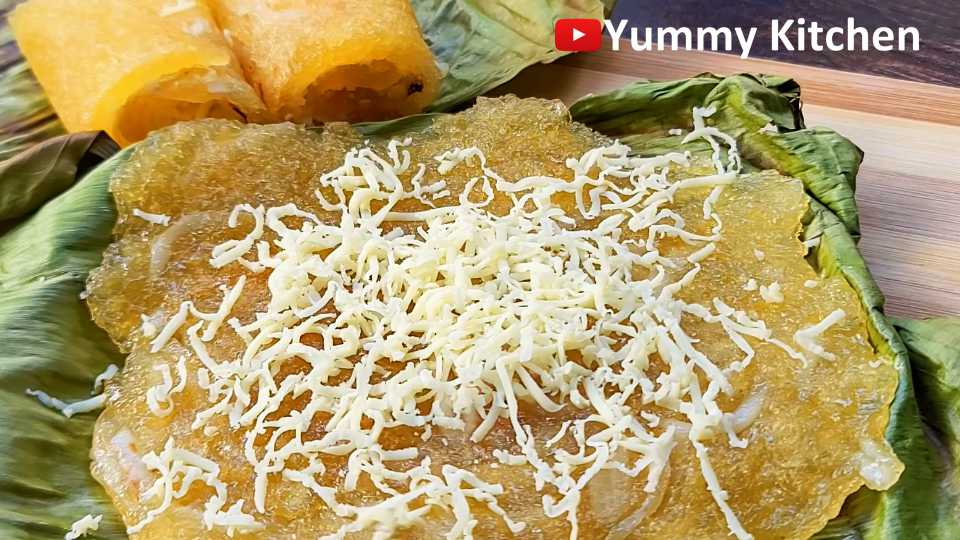
Try our other Yummy Cassava Based Recipes :
- Cassava Balls ( Colorful sweet gluten-free chewy balls made of cassava )
- Traditional Homemade Cassava Cake
- Steamed Cassava Cake (with Costing)
- Cassava Karioka ( Fried Cassava Balls dusted in sugar )
- Cassava Suman ( the traditional Filipino suman made with cassava instead of rice )
Sinalab Recipe in Tagalog
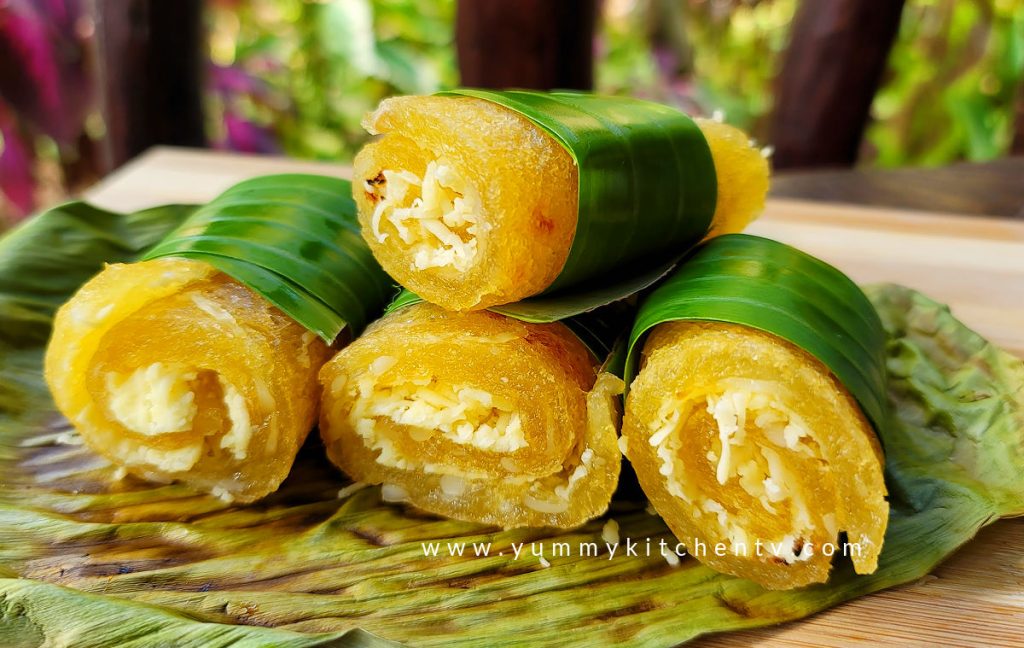
Mga Sangkap:
- 1/2 kilong kamoteng kahoy (cassava)
- 1/4 tasang margarine (tinunaw)
- 1 tasang brown sugar
- 1/2 tasang shredded buko
- grated cheese (optional)
- dahon ng saging (pangbalot)
Paano Lutuin:
- Balatan ang kamoteng kahoy at hiwain ito sa malalaking piraso. I-grate ang mga ito at pigain gamit ang mga kamay upang para mabawasan ang tubig nito. Ilipat ang grated kamoteng kahoy sa isang malaking bowl.
- Sunod na ilagay ang tunaw na margarine, brown sugar, at shreddes buko. Haluin ng mabuti hanggang maging malagkit.
- Maglagay ng isang piraso ng dahon ng saging sa malinis at patag na lugar. Kumuha ng ilang kutsara ng mixture at ilagay sa dahon. I-spread at iflatten ang mixture bago takpan ng isa pang dahon ng saging. Gawin ang mga steps na ito sa iba pang mixture.
- Magpainit ng kawali. Ilagay ang mga mixture habang nasa loob ng dahon ng saging. Takpan ang kawali at hayaang maluto ito ng ilang minuto. Kapag ang dahon ng saging sa ibaba ay naging brown na, baligtarin ang mga dahon upang lutuin ang kabilang side. Gawin ang mga steps na ito sa iba pang mixture.
- Lagyan ng grated cheese ang ibabaw ng sinalab. I-roll ang mga ito at hiwain ito sa gitna bago ihain. Enjoyin kasama ng iyong favorite kape o tsaa. Yum!
#Sinalab #FilipinoCuisine #PinoyFood #FilipinoDish #TraditionalFood #Foodie #PinoyFlavors #FilipinoDelight #TasteOfThePhilippines #FilipinoRecipes #HomeCookedMeals #PhilippineFlavors #FoodLovers #DeliciousPinoy #SavorTheFlavors
